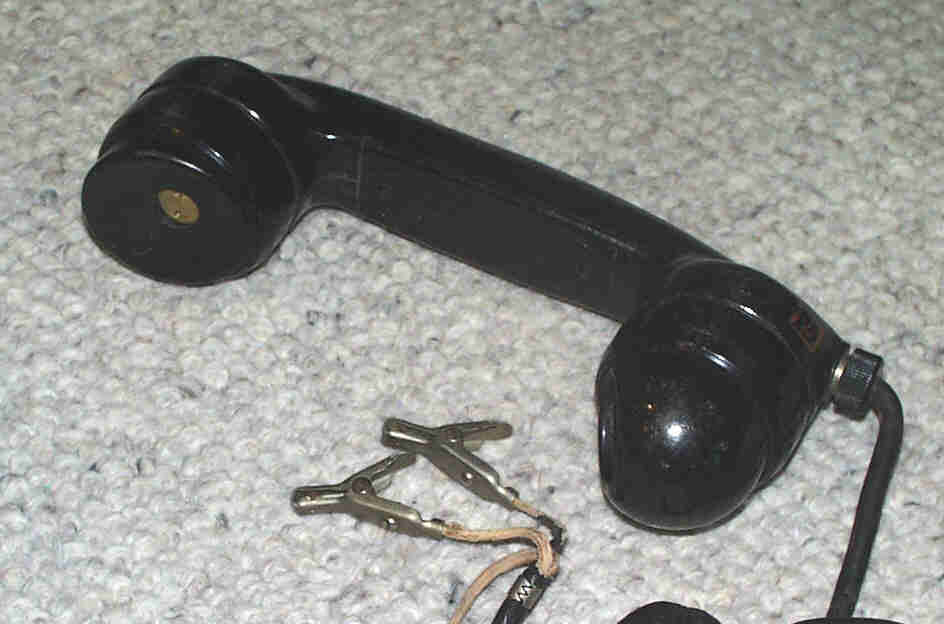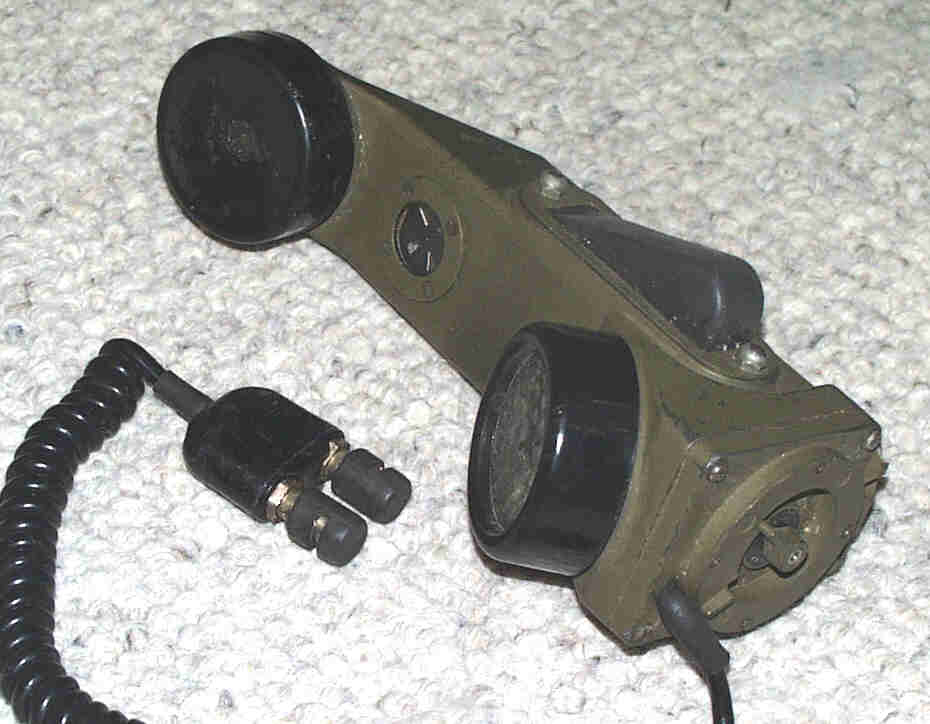Here are a few of the commonly seen sound-powered telephones that are useful for crystal set purposes. Elements generally have a nominal impedance of 600 ohms. Wire in parallel for 300 ohms or in series for 1200 ohms. You'll need a transformer that matches this low impedance to 10K ohms or more. 100K is very desirable.
Field Testing: If you put one of these to
your ear, you'll be
able to hear yourself. If you're not sure, short the input lead, which
will kill the signal. This does not apply to the TA-1/PT. The push to
talk
switch disconnects the receiver in this phone.
US Navy "Deck Talker": Actual nomenclature
is unknown. The frame
detail around the earpiece is a dead giveaway. These are highly
desirable
as they already have a headband and two earpieces. You'll most likely
want
to disconnect the breast plate and microphone. Install the mic element
in your antique horn speaker for improved performance.

US Army Signal Corps Handset TS-10: These
were made by many different
manufacturers. Some use the same element for both transmitter and
receiver.
This means you can make a headset from a single TS-10. Others use
dissimilar
elements. The transmitters are usable as receivers, so don't throw them
away. However, it's best to have a matched pair. The rounded shroud
over
the mouthpiece will help you identify these at a distance, but some
none-sound-powered
phones have a similar configuration. Some examples include a
push-to-talk
switch.

Telephone Set TA-1/PT: This is an entire
magneto type field phone
built into a handset. The transmitter and receiver elements are
dissimilar.
The elements are less sensitive than the others shown above, but still
better than common headphones. The elements are small enough to fit
inside
Baldwin Type-C cases. These phones tend to sell for about $30 so
they're
not such a great deal. Receiver elements are labeled TA-118/PT. You may
find some in miiltary surplus channels.